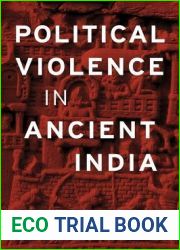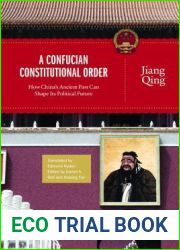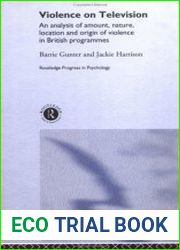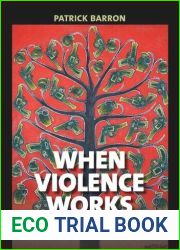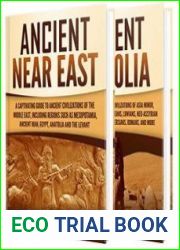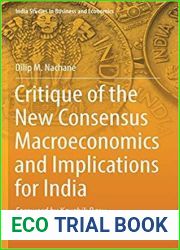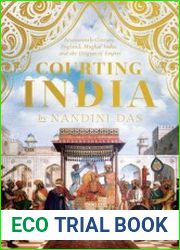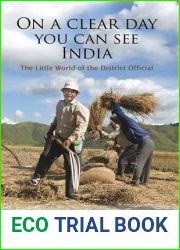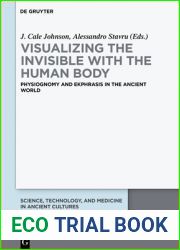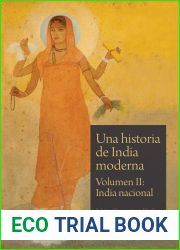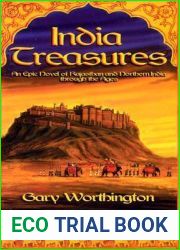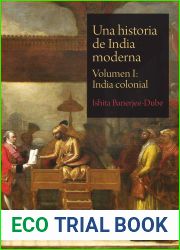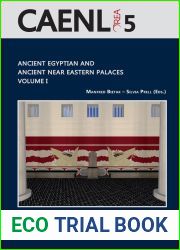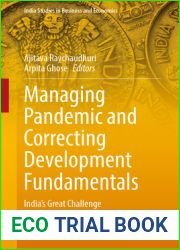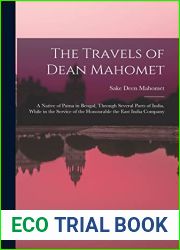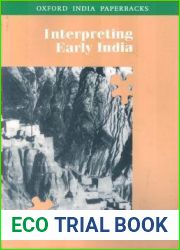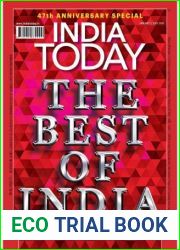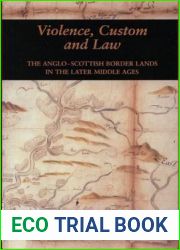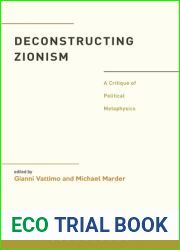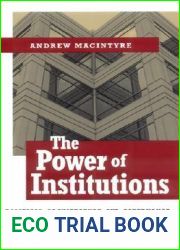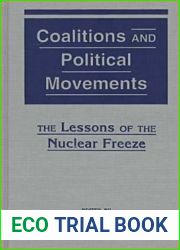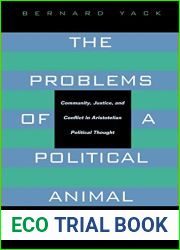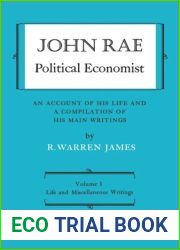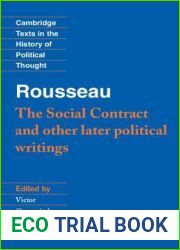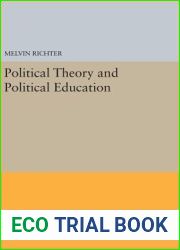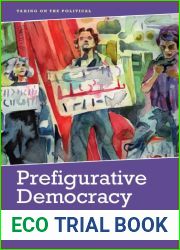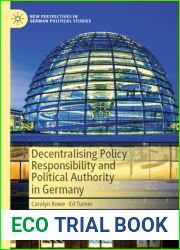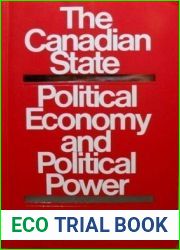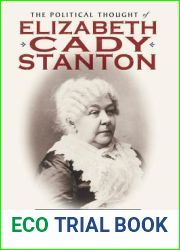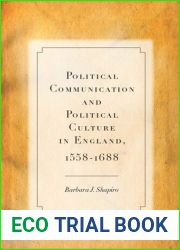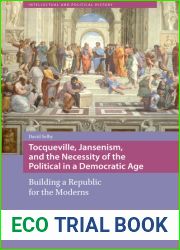
BOOKS - Political Violence in Ancient India

Political Violence in Ancient India
Author: Upinder Singh
Year: September 25, 2017
Format: PDF
File size: PDF 7.2 MB
Language: English

Year: September 25, 2017
Format: PDF
File size: PDF 7.2 MB
Language: English

Political Violence in Ancient India: A Study of the Complex Struggle Between Violence and Nonviolence In her book, Political Violence in Ancient India, Upinder Singh delves into the intricate and multifaceted relationship between violence and nonviolence in the political landscape of ancient India, spanning over twelve hundred years from 600 BCE to 600 CE. Through an exhaustive examination of epics, religious texts, political treatises, plays, poems, inscriptions, and art, Singh uncovers the dynamic tension between these two seemingly opposing forces in the realm of kingship and political thought. This complex struggle is characterized by the constant negotiation between the need for power and the excesses that can lead to tyranny and oppression. The concept of dharma, duty, and renunciation played a significant role in these debates, with intellectuals grappling with the boundaries of what was deemed acceptable in the pursuit of power. Buddhists, Jainas, and even the pacifist Maurya Emperor Ashoka all acknowledged the impossibility of absolute nonviolence for kings, yet questions, doubts, and dissent continued to persist. By 600 CE, religious thinkers, political theorists, and poets had justified and aestheticized political violence to a great extent, highlighting the enduring relevance of these debates in understanding political ideas in antiquity and in contemporary times.
Политическое насилие в Древней Индии: исследование сложной борьбы между насилием и ненасилием В своей книге «Политическое насилие в Древней Индии» Упиндер Сингх углубляется в сложные и многогранные отношения между насилием и ненасилием в политическом ландшафте Древней Индии, охватывающие более двенадцати сотен лет с 600 г. до н.э. до 600 г СЕ. Посредством исчерпывающего изучения эпосов, религиозных текстов, политических трактатов, пьес, поэм, надписей и искусства Сингх раскрывает динамическое напряжение между этими двумя, казалось бы, противоборствующими силами в сфере царствования и политической мысли. Эта сложная борьба характеризуется постоянными переговорами между необходимостью власти и перегибами, которые могут привести к тирании и угнетению. Концепция дхармы, долга и отречения сыграла значительную роль в этих дебатах, когда интеллектуалы боролись с границами того, что считалось приемлемым в погоне за властью. Буддисты, джайны и даже пацифист Маурья Император Ашока все признали невозможность абсолютного ненасилия для царей, однако вопросы, сомнения и инакомыслие продолжали сохраняться. К 600 году религиозные мыслители, политические теоретики и поэты в значительной степени оправдали и эстетизировали политическое насилие, подчеркивая непреходящую актуальность этих дебатов для понимания политических идей в древности и в современное время.
Violence politique dans l'Inde antique : une étude de la lutte complexe entre la violence et la non-violence Dans son livre Violence politique dans l'Inde antique, Upinder ngh explore la relation complexe et multiforme entre la violence et la non-violence dans le paysage politique de l'Inde antique, couvrant plus de douze cents ans de 600 à 600 gr. Par une étude exhaustive des épopées, des textes religieux, des traités politiques, des pièces, des poèmes, des inscriptions et des arts, ngh révèle la tension dynamique entre ces deux forces apparemment opposées dans le domaine du règne et de la pensée politique. Cette lutte complexe se caractérise par des négociations continues entre la nécessité du pouvoir et les excès qui peuvent conduire à la tyrannie et à l'oppression. La notion de dharma, de devoir et d'abnégation a joué un rôle important dans ce débat, lorsque les intellectuels se sont battus contre les limites de ce qui était considéré comme acceptable dans la poursuite du pouvoir. s bouddhistes, les jaïns et même le pacifiste Maurya L'empereur Ashoka a tous reconnu l'impossibilité de la non-violence absolue pour les rois, mais les questions, les doutes et la dissidence ont continué. En 600, les penseurs religieux, les théoriciens politiques et les poètes ont largement justifié et esthétisé la violence politique, soulignant la pertinence constante de ce débat pour la compréhension des idées politiques dans l'antiquité et à l'époque moderne.
La violencia política en la India antigua: un estudio sobre la compleja lucha entre la violencia y la no violencia En su libro «La violencia política en la India antigua», Upinder ngh profundiza en la compleja y polifacética relación entre la violencia y la no violencia en el panorama político de la India antigua, que abarca más de doce centenares de desde 600 a. C. hasta 600 g CE. A través de un estudio exhaustivo de épicas, textos religiosos, tratados políticos, obras de teatro, poemas, inscripciones y arte, ngh revela la tensión dinámica entre estas dos fuerzas aparentemente opuestas en la esfera del reinado y el pensamiento político. Esta compleja lucha se caracteriza por una negociación constante entre la necesidad de poder y los excesos que pueden conducir a la tiranía y la opresión. concepto de dharma, deuda y abdicación jugó un papel significativo en este debate, cuando los intelectuales lucharon contra los límites de lo que se consideraba aceptable en la búsqueda del poder. Budistas, jainistas e incluso el pacifista Maurya Emperador Ashoka todos reconocieron la imposibilidad de una no violencia absoluta para los reyes, sin embargo, las preguntas, dudas y disidencias continuaron persistiendo. Para el año 600, pensadores religiosos, teóricos políticos y poetas justificaban y estetizaban en gran medida la violencia política, destacando la permanente relevancia de este debate para la comprensión de las ideas políticas en la antigüedad y en los tiempos modernos.
Violência Política na Índia Antiga: Pesquisa sobre a complexa luta entre violência e não violência Em seu livro «Violência Política na Índia Antiga», Upinder ngh aprofundou-se em relações complexas e multifacetadas entre violência e não violência na paisagem política da Índia Antiga, que abrangem mais de doze anos de 600 a 600 g CE. Através de um estudo abrangente de épicos, textos religiosos, tratados políticos, peças, poemas, escrituras e artes, ngh revela a tensão dinâmica entre as duas forças aparentemente contrárias ao reinado e ao pensamento político. Esta luta complexa é caracterizada pelas constantes negociações entre a necessidade de poder e os excessos que podem levar à tirania e à opressão. O conceito de dharma, dever e renúncia desempenhou um papel significativo neste debate, quando os intelectuais lutavam contra os limites do que era considerado aceitável na busca pelo poder. Budistas, jainos e até o pacifista Maurya Imperador Ashoka reconheceram a impossibilidade da não violência absoluta para os reis, mas as questões, dúvidas e dissidências continuaram. Em 600, os pensadores religiosos, teóricos políticos e poetas justificaram e estetizaram em grande medida a violência política, enfatizando a relevância constante deste debate para a compreensão das ideias políticas na antiguidade e nos tempos modernos.
Violenza politica nell'Antica India: uno studio sulla complessa lotta tra violenza e non violenza Nel suo libro «La violenza politica nell'antica India», Upinder ngh approfondisce le complesse e molteplici relazioni tra violenza e non violenza nel panorama politico dell'Antica India, che coprono più di dodici centinaia di anni dal '600 al'600. Attraverso uno studio approfondito di epoche, testi religiosi, trattati politici, opere, poesie, scritte e arte, ngh rivela le tensioni dinamiche tra queste due forze apparentemente contrarie al regno e al pensiero politico. Questa complessa lotta è caratterizzata da continui negoziati tra necessità di potere e sovraccarichi che possono portare alla tirannia e all'oppressione. Il concetto di dharma, dovere e abdicazione ha giocato un ruolo importante in questo dibattito, quando gli intellettuali si sono battuti contro i limiti di ciò che si riteneva accettabile nel perseguire il potere. Buddisti, jaini e persino il pacifista Maurya Imperatore Ashoka tutti hanno riconosciuto l'impossibilità della non violenza assoluta per i re, ma le domande, i dubbi e il dissenso continuavano a persistere. Nel '600, i pensatori religiosi, i teorici politici e i poeti avevano sostanzialmente giustificato ed estetizzato la violenza politica, sottolineando la costante rilevanza di questo dibattito per comprendere le idee politiche nell'antichità e nel tempo moderno.
Politische Gewalt im alten Indien: Eine Studie über den komplexen Kampf zwischen Gewalt und Gewaltlosigkeit Upinder ngh vertieft in seinem Buch „Politische Gewalt im alten Indien“ das komplexe und facettenreiche Verhältnis zwischen Gewalt und Gewaltlosigkeit in der politischen Landschaft des alten Indiens, das sich über mehr als zwölfhundert Jahre von 600 v. Chr. bis 600 v. Chr. erstreckt. Durch ein umfassendes Studium von Epen, religiösen Texten, politischen Abhandlungen, Theaterstücken, Gedichten, Inschriften und Kunst offenbart ngh die dynamische Spannung zwischen diesen beiden scheinbar gegensätzlichen Kräften im Reich der Herrschaft und des politischen Denkens. Dieser komplexe Kampf ist gekennzeichnet durch ständige Verhandlungen zwischen der Notwendigkeit von Macht und Exzessen, die zu Tyrannei und Unterdrückung führen können. Das Konzept von Dharma, Pflicht und Entsagung spielte eine bedeutende Rolle in dieser Debatte, als Intellektuelle die Grenzen dessen bekämpften, was im Streben nach Macht als akzeptabel angesehen wurde. Buddhisten, Jains und sogar der Pazifist Maurya Kaiser Ashoka erkannten alle die Unmöglichkeit der absoluten Gewaltlosigkeit für Könige, aber Fragen, Zweifel und Dissens blieben bestehen. Um 600 hatten religiöse Denker, politische Theoretiker und Dichter politische Gewalt weitgehend gerechtfertigt und ästhetisiert, was die anhaltende Relevanz dieser Debatte für das Verständnis politischer Ideen in der Antike und in der Neuzeit hervorhob.
Przemoc polityczna w starożytnych Indiach: Badanie złożonej walki między przemocą a niewirą W książce „Przemoc polityczna w starożytnych Indiach” Upinder ngh zagłębia się w złożony i wielowymiarowy związek między przemocą a niewirą w politycznym krajobrazie starożytnych Indii, obejmujący ponad dwanaście stuleci od 600 BC do 600 g CE. Poprzez wyczerpujące studium epickich, tekstów religijnych, traktatów politycznych, sztuk, wierszy, inskrypcji i sztuki, ngh ujawnia dynamiczne napięcie między tymi dwoma pozornie przeciwnymi siłami w sferze królewskiej i politycznej myśli. Ta złożona walka charakteryzuje się ciągłymi negocjacjami między potrzebą władzy a ekscesami, które mogą prowadzić do tyranii i ucisku. Istotną rolę w tej debacie odegrała koncepcja dharmy, obowiązku i wyrzeczenia, przy czym intelektualiści trzymali się granic tego, co uznano za dopuszczalne w dążeniu do władzy. Buddyści, Jains, a nawet pacyfista Maurya Cesarz Aszoka wszyscy uznali niemożność bezwzględnego braku przemocy dla królów, ale wciąż trwały pytania, wątpliwości i sprzeciwy. Przez 600 myśliciele religijni, teoretycy polityczni i poeci w dużej mierze usprawiedliwiali i estetyzowali przemoc polityczną, podkreślając trwałe znaczenie tych debat dla zrozumienia idei politycznych w starożytności i czasach nowożytnych.
אלימות פוליטית בהודו העתיקה: מחקר של המאבק המורכב בין אלימות ואי-אלימות בספרו ”אלימות פוליטית בהודו העתיקה”, Upinder ngh נמחק לתוך היחסים המורכבים והמרובים בין אלימות ואי-אלימות בנוף הפוליטי של הודו העתיקה, המשתרעים על פני 12 מאה שנים מ-600 B C עד 600 גרם CE. באמצעות מחקר ממצה של אפיקים, טקסטים דתיים, מסות פוליטיות, מחזות, שירים, כתובות ואמנות, סינג חושף את המתח הדינמי בין שני כוחות מנוגדים לכאורה בתחום המלוכה והמחשבה הפוליטית. מאבק מורכב זה מאופיין במשא-ומתן מתמיד בין הצורך בכוח לבין הפרזות העלולות להוביל לעריצות ודיכוי. מושג הדהארמה, החובה וההתנערות מילא תפקיד משמעותי בוויכוח זה, כאשר אינטלקטואלים נאבקים בגבולות של מה שנחשב מקובל ברדיפת השלטון. בודהיסטים, ג 'יינים ואפילו הפציפיסטים מאוריה הקיסר אשוקה כולם הכירו באי-האפשרות של אי-אלימות מוחלטת כלפי המלכים, עד 600 הוגים דתיים, תאורטיקנים פוליטיים ומשוררים הצדיקו במידה רבה את האלימות הפוליטית, והדגישו את הרלוונטיות המתמשכת של ויכוחים אלה להבנת רעיונות פוליטיים בימי קדם ובתקופה המודרנית.''
Eski Hindistan'da yasi Şiddet: Şiddet ve Şiddetsizlik Arasındaki Karmaşık Mücadele Üzerine Bir Çalışma "Eski Hindistan'da yasi Şiddet'adlı kitabında Upinder ngh, antik Hindistan'ın siyasi manzarasında şiddet ve şiddetsizlik arasındaki karmaşık ve çok yönlü ilişkiyi, MÖ 600'den MS 600 g'ye kadar on iki yüz yılı aşkın bir süredir inceliyor. Destanları, dini metinleri, siyasi incelemeleri, oyunları, şiirleri, yazıtları ve sanatı kapsamlı bir şekilde inceleyen ngh, krallık ve siyasi düşünce alanındaki bu iki karşıt güç arasındaki dinamik gerilimi ortaya koyuyor. Bu karmaşık mücadele, iktidar ihtiyacı ile tiranlık ve baskıya yol açabilecek aşırılıklar arasındaki sürekli müzakerelerle karakterize edilir. Dharma, görev ve feragat kavramı bu tartışmada önemli bir rol oynadı, entelektüeller iktidar peşinde koşarken kabul edilebilir olanın sınırlarıyla boğuşuyordu. Budistler, Jainler ve hatta pasifist Maurya İmparatoru Ashoka, krallar için mutlak şiddetsizliğin imkansızlığını kabul ettiler, ancak sorular, şüpheler ve muhalefet devam etti. 600'e gelindiğinde, dini düşünürler, siyaset teorisyenleri ve şairler, siyasi şiddeti büyük ölçüde haklı çıkarmış ve estetize etmiş, bu tartışmaların antik ve modern zamanlardaki siyasi fikirleri anlamadaki kalıcı önemini vurgulamıştır.
العنف السياسي في الهند القديمة: دراسة عن الصراع المعقد بين العنف واللاعنف في كتابه «العنف السياسي في الهند القديمة»، يتعمق Upinder ngh في العلاقة المعقدة والمتعددة الأوجه بين العنف واللاعنف في المشهد السياسي للهند القديمة، والتي تمتد على أكثر من اثني عشر مائة من 600 قبل الميلاد إلى 600 غ م. من خلال دراسة شاملة للملاحم والنصوص الدينية والأطروحات السياسية والمسرحيات والقصائد والنقوش والفن، يكشف سينغ عن التوتر الديناميكي بين هاتين القوتين المتعارضتين على ما يبدو في عالم الملكية والفكر السياسي. ويتسم هذا الصراع المعقد بمفاوضات مستمرة بين الحاجة إلى السلطة والتجاوزات التي يمكن أن تؤدي إلى الاستبداد والقمع. لعب مفهوم دارما والواجب والتخلي دورًا مهمًا في هذا النقاش، حيث تصارع المثقفون مع حدود ما اعتبر مقبولًا في السعي وراء السلطة. اعترف البوذيون والجاينيون وحتى الإمبراطور ماوريا أشوكا السلمي باستحالة اللاعنف المطلق للملوك، لكن الأسئلة والشكوك والمعارضة استمرت. بحلول عام 600، كان المفكرون الدينيون والمنظرون السياسيون والشعراء قد برروا العنف السياسي وجملوه إلى حد كبير، مؤكدين على الأهمية الدائمة لهذه المناقشات لفهم الأفكار السياسية في العصور القديمة والحديثة.
고대 인도의 정치 폭력: 폭력과 비폭력 사이의 복잡한 투쟁에 대한 연구 "고대 인도의 정치 폭력" 에서 Upinder ngh는 고대 인도의 정치 환경에서 폭력과 비폭력 사이의 복잡하고 다각적 인 관계를 탐구합니다. 기원전 600 년에서 600 년까지 싱은 서사시, 종교 텍스트, 정치 논문, 연극, 시, 비문 및 예술에 대한 철저한 연구를 통해 왕권과 정치 사상의 영역에서이 두 가지 반대 세력 사이의 역동적 인 긴장을 보여줍니다. 이 복잡한 투쟁은 폭정과 억압으로 이어질 수있는 권력과 과잉의 필요성 사이의 지속적인 협상이 특징입니다. 달마, 의무 및 포기의 개념은이 논쟁에서 중요한 역할을했으며, 지식인들은 권력을 추구하는 데 수용 가능한 것으로 간주되는 경계를 파악하고 있습니다. 불교도, 자인 족, 심지어 평화 주의자 마우 리아 황제 아쇼카 (Ashoka) 는 모두 왕들에게 절대적인 비폭력의 불가능성을 인식했지만 의문, 의심, 반대는 계속 지속되었다. 600 년이되자 종교 사상가, 정치 이론가, 시인들은 정치적 폭력을 크게 정당화하고 미학을 가졌으며, 이러한 논쟁이 고대와 현대의 정치적 아이디어를 이해하는 것과의 지속적인 관련성을 강조했다.
古代インドにおける政治的暴力:暴力と非暴力の複雑な闘争の研究「古代インドにおける政治的暴力」の著書で、アップインダー・シンは古代インドの政治的景観における暴力と非暴力の複雑で多面的な関係を掘り下げる600 BCへの600のgのセリウム。シンは、叙事詩、宗教的なテキスト、政治的な論文、演劇、詩、碑文、芸術の徹底的な研究を通じて、王権と政治思想の領域におけるこれら2つの一見反対勢力の間のダイナミックな緊張を明らかにします。この複雑な闘争は、権力の必要性と過剰さの間の絶え間ない交渉によって特徴付けられ、専制政治と抑圧につながる可能性があります。ダルマ、義務、放棄という概念は、権力を追求する上で許容されるものの境界を知識人が把握し、この議論において重要な役割を果たした。仏教徒、ジャインズ、さらには平和主義者のマウリヤ天皇アショーカは、すべて王たちにとって絶対的な非暴力の不可能性を認識していたが、質問、疑念、反対は継続し続けた。600までに、宗教思想家、政治理論家、詩人は政治的暴力を大部分を正当化し、美化し、古代と現代における政治思想を理解するためのこれらの議論の持続的な関連性を強調した。
古代印度的政治暴力:對暴力與非暴力之間復雜鬥爭的研究在他的著作《古代印度的政治暴力》中,Upinder ngh深入探討了古代印度政治格局中暴力與非暴力之間的復雜和多方面關系,從公元前600到公元600。通過對史詩,宗教文本,政治論文,戲劇,詩歌,銘文和藝術的詳盡研究,辛格揭示了統治和政治思想領域這兩個看似對立的力量之間的動態張力。這場復雜的鬥爭的特點是需要權力與可能導致暴政和壓迫的過度擴張之間不斷進行談判。佛法,職責和退位的概念在這些辯論中發揮了重要作用,當時知識分子與追求權力時被認為是可以接受的界限作鬥爭。佛教徒,Ja那教徒甚至和平主義者毛裏雅皇帝阿育王都承認國王不可能實現絕對非暴力,但是問題,懷疑和異議繼續存在。到600,宗教思想家,政治理論家和詩人在很大程度上為政治暴力辯護和美化,強調了這些辯論與理解古代和現代政治思想的持久相關性。







